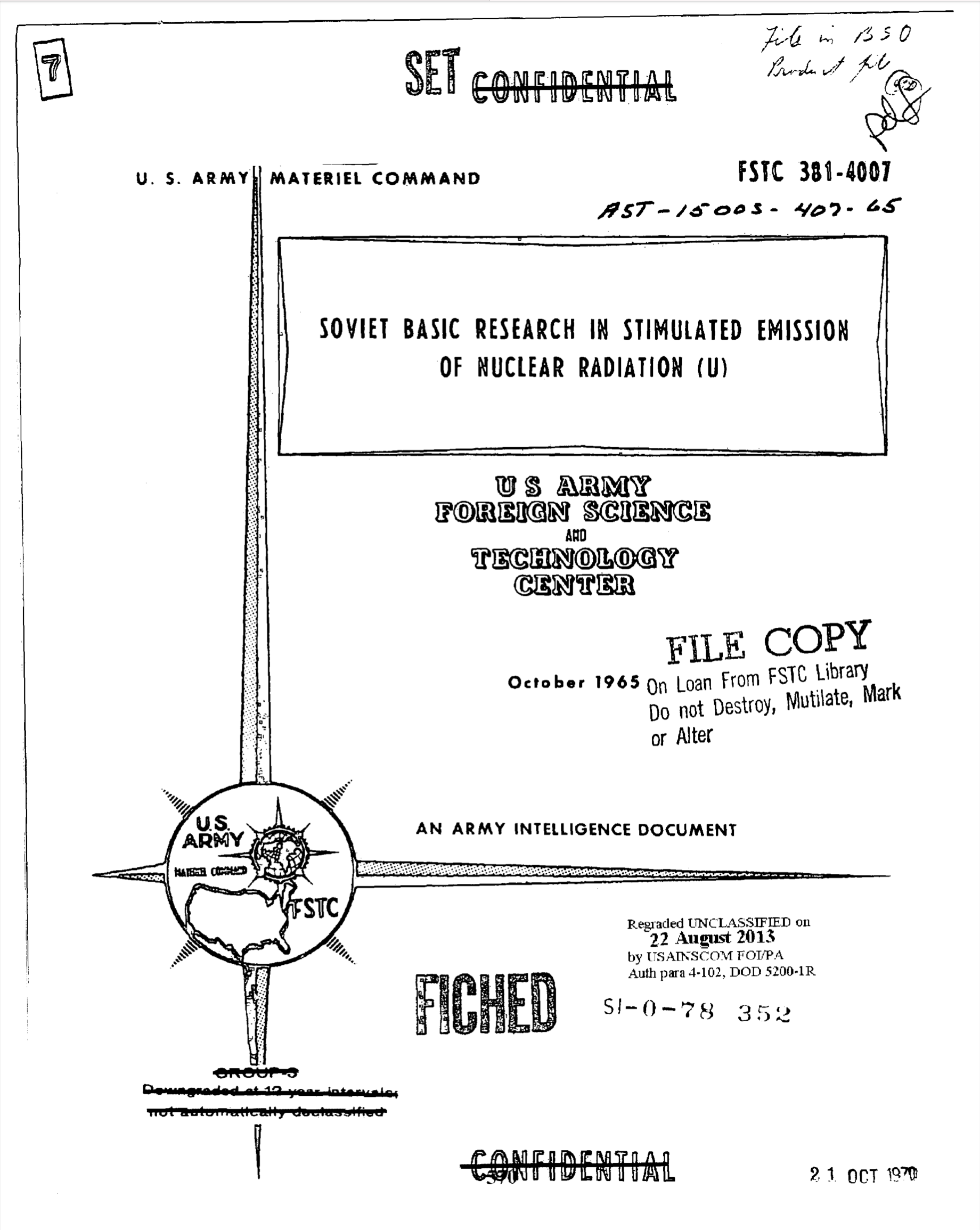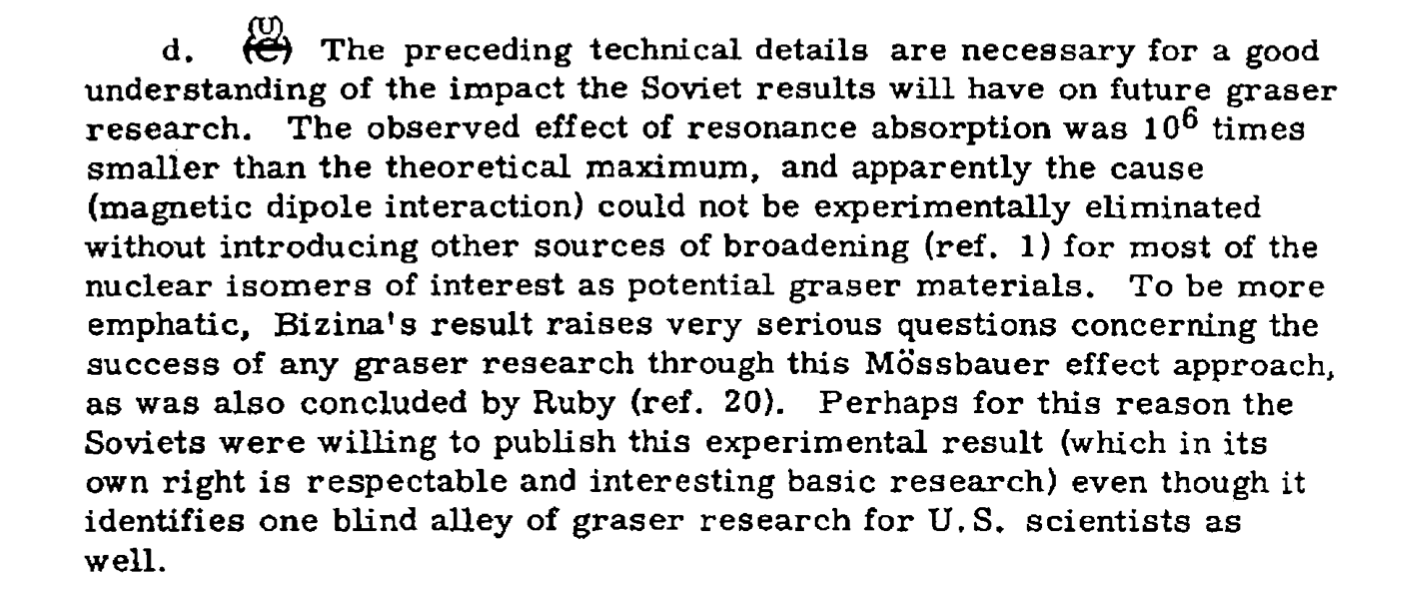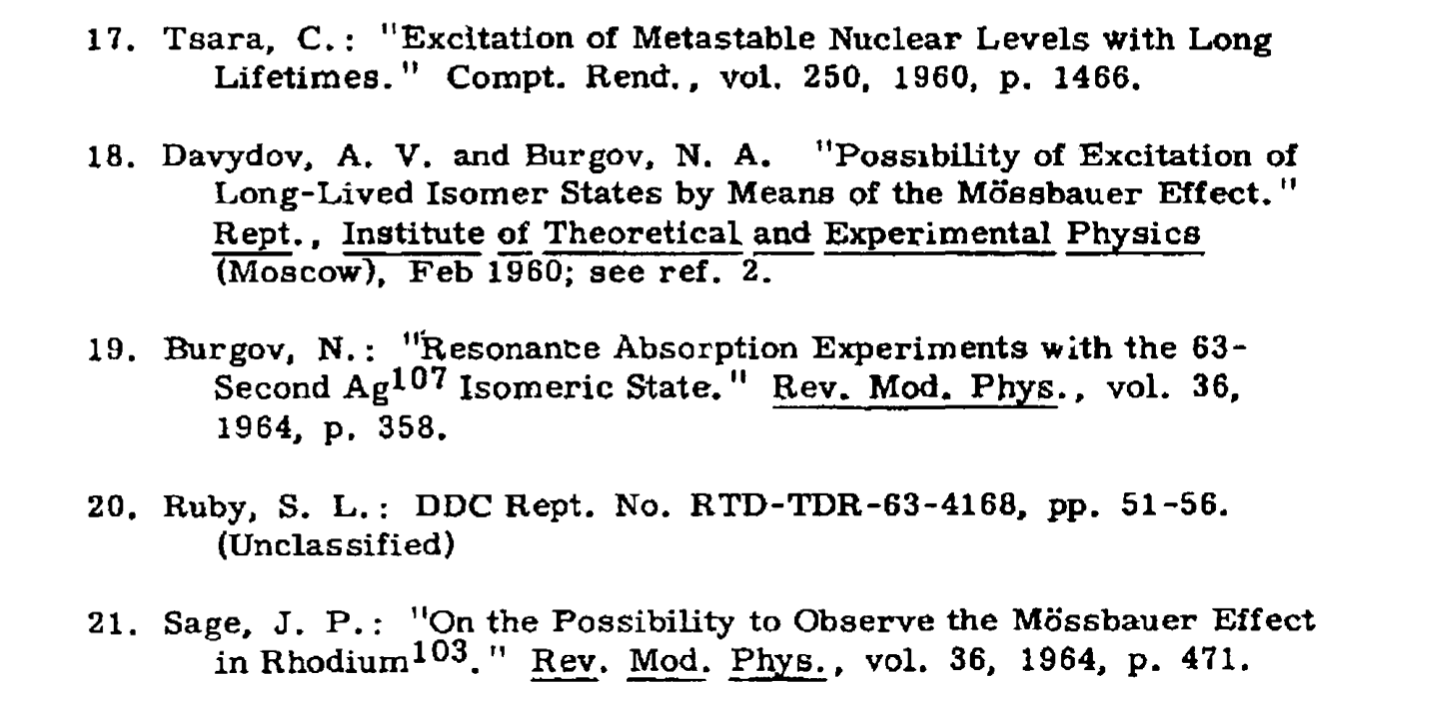Stan evaluated the feasibility of gamma-ray lasers for the Air Force in 1964
I mentioned the intriguing reference in Stan's CV papers to his having performed "an (un)feasibility study for the Air Force." It is also included in his publication list, as follows.
"Feasibility Study of (γ-Ray) Electromagnetic Generator" Document No RTD-TDR-63-4168 (Defense Documentation Center)
I searched on the document number and found one and only one search result, where Stan's report is mentioned and footnoted in a different DOD assessment of Soviet science relative to possible gamma-ray laser development.
Probably I could track down Stan's report in an unclassified DOD library of some kind, but for now this other report, "Soviet Basic Research In Stimulated Emission Of Nuclear Radiation," prepared in October 1965 for the U.S. Army Foreign Science and Technology Center, tells us most of what we need to know.
It seems that one of the implications of the Mössbauer effect that people were talking about in the early 1960s was that it might be used to stimulate a nuclear reaction that would generate a coherent beam of gamma-rays, and that theoretically this could be applied in some form of directed energy beam weapon.
Just as a laser amplifies optical light and a maser amplifies microwave radiation, a hypothetical graser would amplify the much shorter wavelength gamma radiation using a Mössbauer nuclear transition to generate the gamma rays and stimulate the beam.
This was obviously the kind of thing that would pique the interest of the science program officers at the Department of Defense, people like Max Swerdlow from the Air Force Office of Scientific Research whom we saw was a co-sponsor of the first Mössbauer conference in Urbana in 1960. And then all the more so when various related experiments were openly reported in the Soviet scientific literature.
Could the Russians already have a leg up in basic research that could lead to the development of a new class of space weapon?
How Stan got what was essentially a consulting assignment from the Air Force to answer that question is not yet known. To me, it is plausible that it came through Swerdlow, whom Stan probably met in Urbana. Since the science involved was specifically a Mössbauer problem, Stan was one of a fairly small number of people qualified to do the work.
What Stan found according to the 1965 report was that the amplification factor produced in the Mössbauer transitions was far too weak to produce a viable technology, now or probably ever. It seemed this conclusion was in agreement with the Soviet physics, which probably explains why the Russian works were openly published in the first place.
Though neither Stan's publication citation or the footnote reference gives a date for the feasibility study, it must be from 1963 or '64. To my knowledge, this was the one and only time he took on any kind of direct work for a government defense agency. Within a few years of this time, he would become an outspoken critic of weapons technologies.
Reading up now on more recent developments, I see that there continued to be quite a bit of active work toward a gamma ray laser basic science, both by Mössbauer and alternative methods. I see that Vitali Goldanski, a Russian physicist Stan knew well and admired, did a lot of work in the field in the 1970s.
Today there is no working gamma-ray laser, and creating one has been called one of the unfinished problems of physics. It seems that Stan's (un)feasibility assessment in 1964 must have saved the Air Force a lot of unnecessary effort and expense.



